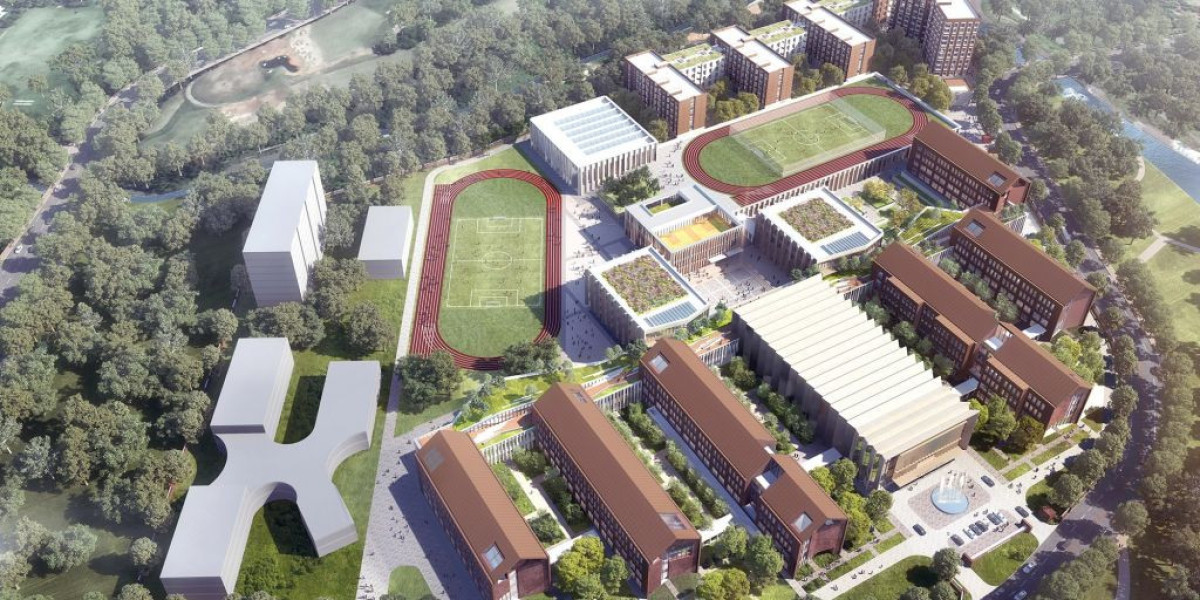Located in the thriving city of Suzhou in Jiangsu Province, Suzhou Foreign Language School (SFLS) was founded in 1994 and later renamed in 2001 to reflect its broader vision of foreign-language and international education. Over the years, the school has developed from a single-branch institution into a full K-12 programme, offering kindergarten through senior high schooling on a campus covering nearly 70,000 m² and with international and domestic programmes side by side. In this blog post, we explore how SFLS is shaping global citizens, highlight key strategies it employs, and offer actionable tips for families and educators looking to replicate such success in the broader arena of China schools and China international schools.
1. A Dual-Track Model: Domestic Excellence + International Outlook
One of SFLS’s defining features is its dual-track teaching model: students can follow the traditional Chinese curriculum (leading to the national higher-education entrance exam) or engage in international programmes (such as the GAC/IGCSE/A-Level routes). This balance allows the school to cater both to strong domestic demand and to families with global aspirations. To Know more about Suzhou Foreign Language School.
Actionable tips:
For schools: Build a flexible model where students can choose between the national curriculum and an international stream, allowing asset sharing of faculty and resources.
For parents: When selecting a school, ask how the dual-track works in practice — how many students switch between tracks, how resources are split, and how international stream students are supported.
For students: If on the international track, proactively develop both subject knowledge and language competence so you are ready for overseas universities and aware of the Chinese higher-education landscape.
2. Foreign-Language Focus & Multilingual Opportunity
SFLS emphasises foreign-language learning and international competence. According to data, the school offers multiple second-languages (German, Spanish, etc.) and is an official examination centre for Cambridge programmes. In doing so, it encourages students to become comfortable in a multilingual and multicultural environment, a key trait of global citizens.
Actionable tips:
For educators: Introduce at least one second foreign language from an early grade (for example German or Spanish) and integrate cultural exchange programmes.
For students: Don’t stop at English — pick up a third language if your school offers it; the earlier you begin, the greater your fluency and cultural understanding.
For families: When visiting a school, investigate how many languages are taught, whether there are exchange visits or overseas collaborations, and how language proficiency is assessed beyond mere classroom grades.
3. Broad Curriculum Beyond Academics
Beyond test scores, SFLS places emphasis on broad student development: it offers clubs and programmes in music, drama, community service, STEM, Model United Nations and more.l Such a holistic approach supports the aim of nurturing “future leaders and global citizens. Actionable tips:
For schools: Build a diverse co-curricular portfolio – e.g., an MUN team, volunteer service options, arts festivals, sports programmes – so students can explore interests and develop leadership.
For students: Choose one or two extra-curriculars you’re passionate about — depth matters more than breadth in demonstrating character and commitment.
For parents: Encourage your child’s participation and periodically review how the school supports these programmes. Ask for evidence of past student leadership or service achievements.
4. International Exchange and Partnerships
SFLS has established sister-school relationships abroad and arranges overseas exchange visits — tools that expose students directly to global environments and perspectives. This real-world contact is an important element of global-citizen education.
Actionable tips:
For schools: Seek partner schools abroad, and build a sustainable exchange or virtual-exchange programme (e.g., video-link lessons, joint projects).
For students: Participate in exchange visits, even short ones, and reflect on what global citizenship means (cultural awareness, adaptability, empathy).
For families: Ask how many students participate in exchange programmes each year, what the costs are, what the outcomes have been (student reflections, projects completed).
5. High Academic Achievement with Supportive Environment
SFLS consistently ranks among top schools in Suzhou for examination results; for example, in provincial and national A-Level exams its students placed top. But importantly, the school places value on creating a “vibrant atmosphere” where students feel supported and valued.
Actionable tips:
For schools: Ensure strong teacher-student ratios, mentoring systems, and encourage feedback loops so students feel supported, not just pressured.
For students: Make use of mentoring and support services; high achievement is less about raw talent and more about strategy, consistency and support.
For parents: Inquire about teacher qualifications, student-teacher ratios, how student well-being is tracked, and how the school balances challenge with care.
6. Integrating Chinese Culture and Global Outlook
One of the standout strengths of SFLS is that, while it fosters internationalism, it also emphasises traditional Chinese culture and multilingual competence. In today’s globally connected world, being rooted in one’s culture while open to the world is a valuable identity.
Actionable tips:
For schools: Incorporate Chinese cultural education (calligraphy, history, arts) alongside global perspectives to build identity and intercultural competence.
For students: Take time to engage with your own culture (e.g., local heritage, language, history) as a base from which to engage the global community.
For families: Ask how the school balances Chinese cultural content and global curricula; a good school will allow both strands to flourish.
7. Strategic Location and Facilities
SFLS’s location in Suzhou — adjacent to major transport links, within a city of strong economy — and its accommodation and facilities (Euro-style buildings, full programme from kindergarten to senior high) give students a strong environment for learning. Facility and environment matter: a good building, green campus, comfortable boarding or day environment make a difference.
Actionable tips:
For schools: Invest in campus design, dormitory or boarding facilities (if applicable), green spaces and easily accessible transport links.
For students: Visit the campus early if possible, and see how the physical environment makes you feel — safe, supported, ready to learn.
For families: Consider location, transport, boarding vs day options, campus amenities when selecting a school — these are part of the educational investment.
8. Replicating the Model: Lessons for China Schools & China International Schools
What can be learned from SFLS’s success and applied by other China-based schools or China international schools? First: build a clear mission of “global citizen” formation. Second: combine strong academic foundation with linguistic and cultural competence. Third: integrate broad co-curricular activities, international exchanges and real-world experiences. Fourth: maintain an environment of support, high expectations, and cultural rootedness.
Actionable tips:
For school leaders: Develop a mission statement emphasising global citizenship, language competence and cultural rootedness, and align curriculum and activities accordingly.
For educators: Curate your teaching programmes to include more than exam prep — embed inquiry-based learning, intercultural projects and student leadership opportunities.
For parents and students: Prioritise schools that articulate a clear vision for global citizenship, show evidence of strong outcomes (academics + international placements + student leadership) and offer pathways (both domestic and international) to realise those ambitions.
In conclusion, Suzhou Foreign Language School exemplifies how a China-based school can successfully prepare students to be global citizens — academically competitive, culturally grounded, linguistically versatile, and globally aware. For families and educators across China schools and China international schools, the lessons are clear: build dual-track offerings, emphasise language and culture, broaden beyond academics, foster international exchange, invest in the environment, and always keep student support at the centre. Encouragingly, this kind of holistic education is increasingly available across China’s international-education sector — and offers wonderful opportunities for students to flourish on the global stage. Let’s continue to advance excellence in China schools and China International Schools together — our students deserve nothing less.








